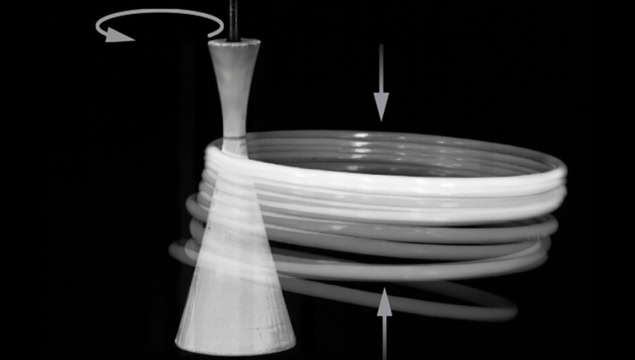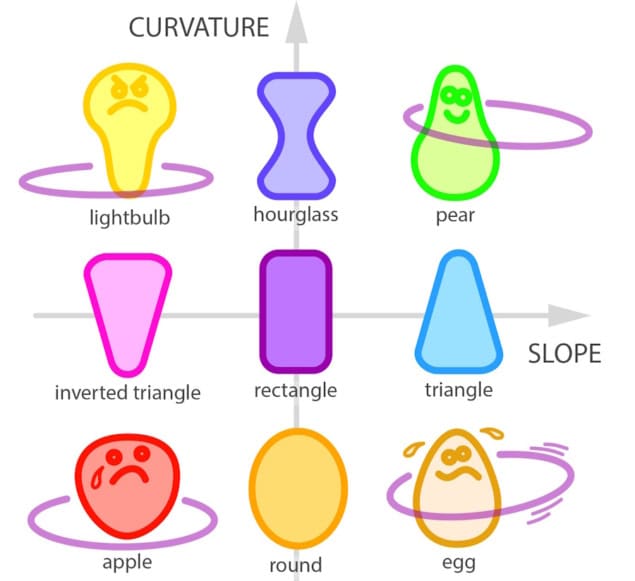
Popularized in the late 1950s as a child’s toy, the hula hoop is undergoing renewed interest as a fitness activity and performance art. But have you ever wondered how a hula hoop stays aloft against the pull of gravity?
Wonder no more. A team of researchers at New York University have investigated the forces involved as a hoop rotates around a gyrating body, aiming to explain the physics and mathematics of hula hooping.
To determine the conditions required for successful hula hoop levitation, Leif Ristroph and colleagues conducted robotic experiments with hoops twirling around various shapes – including cones, cylinders and hourglass shapes. The 3D-printed shapes had rubberized surfaces to achieve high friction with a thin, rigid plastic hoop, and were driven to gyrate by a motor. The researchers launched the hoops onto the gyrating bodies by hand and recorded the resulting motion using high-speed videography and motion tracking algorithms.
They found that successful hula hooping is dependent on meeting two conditions. Firstly, the hoop orbit must be synchronized with the body gyration. This requires the hoop to be launched at sufficient speed and in the same direction as the gyration, following which, the outward pull by centrifugal action and damping due to rolling frication result in stable twirling.

This process, however, does not necessarily keep the hoop elevated at a stable height – any perturbations could cause it to climb or fall away. The team found that maintaining hoop levitation requires the gyrating body to have a particular “body type”, including an appropriately angled or sloped surface – the “hips” – plus an hourglass-shaped profile with a sufficiently curved “waist”.
Indeed, in the robotic experiments, an hourglass-shaped body enabled steady-state hula hooping, while the cylinders and cones failed to successfully hula hoop.
The researchers also derived dynamical models that relate the motion and shape of the hoop and body to the contact forces generated. They note that their findings can be generalized to a wide range of different shapes and types of motion, and could be used in “robotic applications for transforming motions, extracting energy from vibrations, and controlling and manipulating objects without gripping”.

Twists, turns, thrills and spills: the physics of rollercoasters
“We were surprised that an activity as popular, fun and healthy as hula hooping wasn’t understood even at a basic physics level,” says Ristroph in a press statement. “As we made progress on the research, we realized that the maths and physics involved are very subtle, and the knowledge gained could be useful in inspiring engineering innovations, harvesting energy from vibrations, and improving in robotic positioners and movers used in industrial processing and manufacturing.”
The researchers present their findings in the Proceedings of the National Academy of Sciences.



